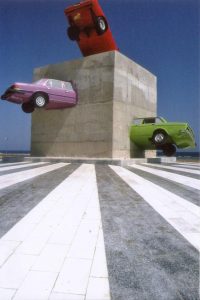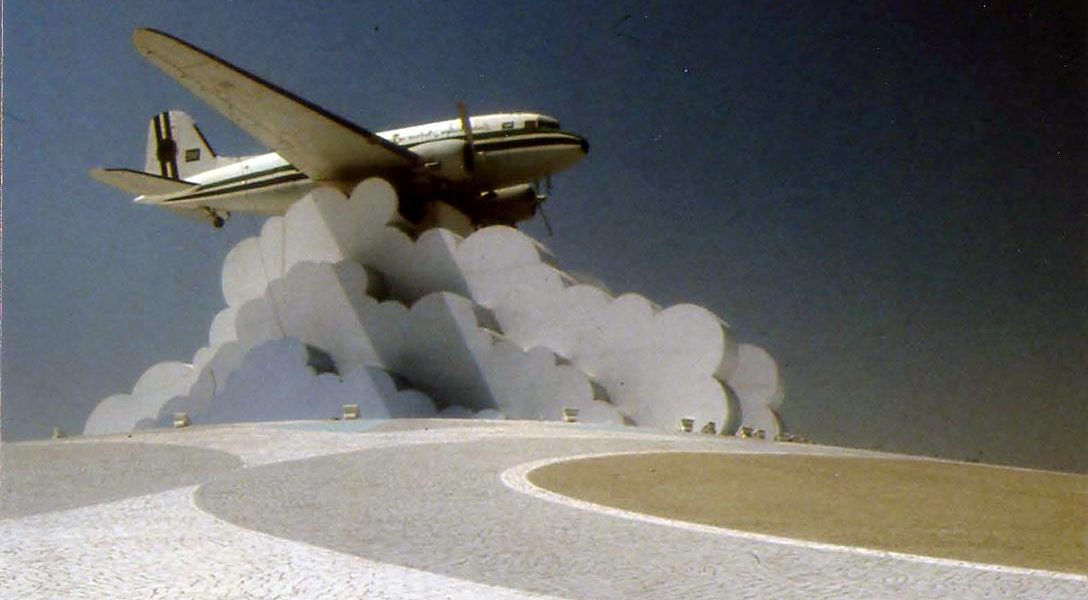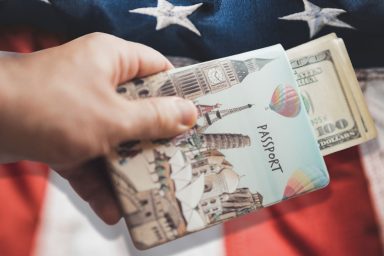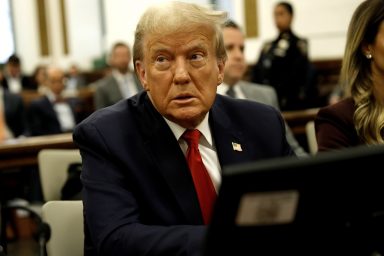In this remarkable first-hand account, a former US consular official describes a pipeline created by the CIA that enabled terrorists to slip into the US with ease. Among them were the mujahideen of Afghanistan — who later became al-Qaeda. Authentic and mind-blowing.
Introduction:
Michael Springmann was, to all appearances, your run-of-the-mill junior low-level consular employee, but he was not in a usual place, nor in a usual time. His government sent him to Saudi Arabia right as it was preparing for a battle royale with the USSR in Afghanistan. In this excerpt from his book, Springmann describes a consulate teeming with CIA personnel, and reveals how, as head of the American visa bureau, he was ordered not to follow his best instincts but instead to approve visas for all manner of dubious individuals. In retrospect, he realized he was witnessing the mujahideen pipeline — the flow of young fighters to take on the Soviets — the same people who later became al-Qaeda.
Springmann, it turns out, was not run-of-the-mill at all. He did not behave as expected. He asked too many questions, and made too many complaints to too many agencies about what was going on. For sounding the alarm, the State Department fired him. The story, in his words,:
“This tale is a sordid sketch of backstabbing, disloyalty, double crosses, faithlessness, falsity, perfidy, sellouts, treachery, and betrayal. All of this is in addition to the stupidity and incompetence normally manifested by the State Department and the intelligence services.”
Here, in anticipation of the 14th anniversary of the 9/11 tragedy, is the third of a multi-part series of excerpts from “Visas for Al-Qaeda: CIA Handouts that Rocked the World” by J. Michael Springmann (Daena Publications, Washington, DC LLC 2014.) These excerpts have been edited and compressed.
To see Part 1, go here, and for Part 2, go here.
A Strange Place Indeed
I began to see Jeddah as a very strange place filled with people I really knew nothing about, who conducted themselves in a remarkably odd fashion. Questions got me nowhere. No one could explain to me what really went on inside the consulate.
Before I left Washington for Jeddah, I wrote to Greta Holtz several times, asking about my job and what she wished she had known before she took up her post there. I never received a response. When I met her in person, she told me she’d been “too upset” to give me a clear picture. Later, after I’d left the service, she called me in Washington and questioned me about the progress of my complaints about Jeddah, even though I’d never mentioned a word to her about the subject.
The Betrayal
Periodically, Foreign Service posts are examined for compliance with law and regulation, and a report is prepared. Nestor Martin, one of my close contacts, a Cuban American with intimate ties to intelligence officials, had warned me to say nothing to the inspectors about problem areas. These included suspect visas, extremely profitable and voluminous liquor sales to expatriates, Muslim and otherwise, as well as the harassment of an Arab-American language teacher. If you do, he cautioned, you will be fired.
When the inspectors came, I was quizzed by Joseph P. O’Neill, one of the State Department’s Inspection Team members. O’Neill pressed me to confirm what he’d heard about visa problems and alcohol deals. He shared details new to me and assured me anything I said would remain confidential. When I repeated what Nestor had stated to me, O’Neill reassured me that nothing would happen to my career. After about an hour, I relented and, trusting my government, confirmed O’Neill’s suspicions.
Just a few days later, Jay Freres wrote a vicious efficiency report on me that would virtually guarantee my dismissal from the Foreign Service.
During my conversation with O’Neill, I told him about the file of shady visas I had been keeping. Neglecting to make a copy or take the file with me, I later learned it had been mysteriously shredded. O’Neill, I suspect, was the instigator of that. He was the only American officer who knew about this file.

“The Accident.” Sculpture by Julio La Fuente. Jeddah, Saudi Arabia. This image is strikingly reminiscent of the events of 9/11. Photo Credit: J. Michael Springmann
Subsequently, when O’Neill was consul general in Bermuda, I wrote him a letter , asking about what really went on at Jeddah. No response. Perhaps this was a result of O’Neill’s becoming an “off-the-books” liaison with the Arab-Afghans he seemed to be protecting (Afghan-Arabs were Arab and Muslim Islamists from other ethnic groups who went to Afghanistan to fight the Soviets.)
This was the same O’Neill who had been DCM (Deputy Chief of the Mission) in Khartoum when Omar Abdel Rahman got his visa.
Revelations on the Road to Unemployment
Like Saul of Tarsus on the road to Damascus, I was blinded by the “light of truth” in a chance meeting with Joe Trento, a journalist at the Public Education Center in Washington. Putting all the hostility toward me into perspective, Joe revealed what had been really going on with the CIA in Jeddah and what had been concealed from me.
It wasn’t garden-variety visa fraud, as I had once thought, but something much more serious: it was the Visas for Terrorists Program, set up to recruit and train — in the United States — murderers, war criminals, and human rights violators for combat in Afghanistan against the Soviet Union.
These men became the founding members of al-Qaeda, the Arab-Afghan Legion. President Jimmy Carter and his National Security Advisor, Zbigniew Kazimierz Brzezinski, began the campaign to assemble these goons to engage in blowing things up and shooting things down, preferably with Soviet soldiers inside.
To help them do that, Trento said, the State Department and CIA sent patsies as visa officers to the Jeddah consulate, which was then handling about forty-five thousand visa applications annually.
If they weren’t bright enough to question what was going on, things would be fine. If they protested the spurious visa requests, as I would, and resisted illegal pressure to overlook them, they could easily be fired because, as he added, “they wouldn’t get with the program” and there was “obviously” something wrong with them.
Similar statements were made by a former US government employee at the Voice of America and another man connected with George Washington University. They told me that the CIA, assisted by asset Osama bin Laden and Saudi connections, had three recruiting offices in the kingdom. However, they said, once the Soviets had withdrawn from Afghanistan, the Saudis were not pleased with the saddle tramps they had helped recruit.
In fact, the Saudis prevented those who’d been enlisted within the kingdom — particularly the Palestinians — from returning. They feared they would use their newly acquired skills to promote “regime change” at home. Other nations in the region rejected these recruits as well, my contacts told me.
Many recruiting offices were located in the United States as well. According to background on Abdullah Azzam, one of the cofounders of the Services Office, an organization placing Arab volunteers with Afghan factions fighting the Soviets):
The main aim of Sheikh Abdullah in creating the Jihad magazine (an Arabic publication providing information about the Afghan war, focusing on Arab efforts to help that struggle) was to inform the Arab world what is happening in Afghanistan; informing them, help funding, recruit people. [Eventually we printed] seventy thousand copies [an issue]. Most of them go to the United States because we had fifty-two centers in the United States. The main office was in Brooklyn, [also] Phoenix, Boston, Chicago, Tucson, Minnesota, Washington DC, and Washington State. [Emphasis added.] Every year [Abdullah Azzam] used to go to United States. The wealthy of the United States can help much more than Muslims who are living in poor countries or under dictatorship.
When I contacted Sheikh Abdullah Anas, Azzam’s son-in-law, by email and telephone in 2013, he somehow couldn’t remember any of this. All he said was that there were only a handful of non-Afghan fighters, and that the CIA had no role in dealing with them.
One cause of his faulty memory might be his gaining asylum in the United Kingdom (The UK’s Secret Intelligence Service was a participant in the Afghan war.) Another might be his rumored interest in moving to the United States and not wanting to offend the people who can make that happen.
While I was at the consulate, I proposed meeting with various Muslim organizations who had been sending me unqualified visa applicants. These candidates were clerics ostensibly going to the United States to preach to congregations. When I asked whether there weren’t any qualified Muslim preachers already in America, they had no answer. To reduce the time I spent with unfit candidates, I wanted to spell out to these Saudi organizations exactly what was required for a successful visa application. Jay P. Freres forbade this.
In a subsequent conversation with Celerino Castillo, a former Drug Enforcement Agency official, I learned that the CIA had been involved for a long time in the visa process in Latin America and, I presume, this cozy arrangement was a model for Saudi Arabia. In Latin American countries, he said, the Agency would slip passports and applications from its contacts into packages sent to the local US consulate or embassy by travel agents. Sandwiched between legitimate applications, “Agency assets” would not be carefully examined by consular officers and would thus get a free ride to the United States.
The question, of course, is: Were these recruits selected in Washington by CIA headquarters or locally by the base or station? (A “base” is a CIA office concealed in a consulate, while a “station” is a CIA office at an embassy, which controls all the intelligence activities in a country.)
The three Agency people “managing” the entire anti-Soviet war in Afghanistan were Marc Sageman, Milt Bearden, and Gus Avrakotos. Avrakotos, the man in charge of arming the Afghans, was known as “Dr. Dirty.
When I interviewed Sageman in his home on August 13, 2013, (at a meeting arranged by Matthew Hoh) he maintained that the CIA stations and bases never communicated with Washington on enlisting fighters abroad.
How Stupid Could They Be?
If I had been informed of what the CIA, the State Department, and Osama bin Laden were doing in Jeddah, I might have been dumb enough at the time to go along with this policy. After all, I trusted my government. The CIA and the State Department would have saved themselves negative publicity, lawsuits, and 20 years of painful truth-telling from me.
While the Agency was going to such trouble to keep me in the dark about the sub rosa recruiting and training of anti-Soviet mujahideen, the intelligence people at Jeddah completely failed to learn about a real security issue: the delivery of Chinese Intermediate Range Ballistic Missiles (IRBMs) to Saudi Arabia. Indeed, US spooks had no idea the things were actually being delivered — until I told them.
After several of my European contacts came to my house for drinks, I learned the IRBMs were being offloaded from ships in the harbor. One of my sources had not only seen the missiles but also the Saudi attempts to conceal them from prying eyes by blocking sight lines with shipping containers.
The next morning, I surprised the Air Attaché with the story. He immediately worked to secure reconnaissance photos of the missiles.
Not everyone found this scoop exciting. Some found it inconvenient. I managed to irritate Karen Sasahara and the CIA Base, as well as Jill Johnston, the consul general’s secretary, by demanding a classified cable be sent out to Washington immediately (Johnston, who was married to the NSA chief, was disgruntled at having to come to work on her day off.)
I learned from a contact in the US embassy in Riyadh that my message had been included in the American president’s daily intelligence briefing.
Aside from my scoop on the IRBMs, I did a goodly amount of reporting on political and economic issues, to the extent that Joe O’Neill, then one of the Inspectors, told me I had generated more analytical cables than the political officer or the Political/Economic Section.
I also visited American citizens imprisoned in Saudi jails and identified dead bodies (harder than it sounds when the passport picture is out of date and the corpse has been dead three days dead before being discovered.)
I managed this despite wrangling daily with the intelligence officers who staffed and ran the consulate. These were the people who arranged for recruiting and training what were then the mujahideen — the fighters who later became al-Qaeda, and then in some cases transformed themselves into ISIS.
I saw, but didn’t recognize, what was taking shape at Jeddah. Now we’ve all learned what happens when the intelligence services control foreign policy and diplomacy: The same “assets” they assembled aided in the bloody breakup of Yugoslavia, the destruction of Iraq, the collapse of Libya, and the on-going savaging of Syria.
RELATED STORIES
Homeland Security Still Dodging Questions on Terrorist “Hands Off” List
Connecting the Dots on … US Failure to Stop Saudi Hijackers
FBI: Knew About Saudi 9/11 Hijacker Ties — but Lied to Protect “National Security”
Related front page panorama photo credit: Entrance to U.S. Consulate General in Jeddah, Saudi Arabia
(US Department of State Archive), Mujahideen in Kunar, Afghanistan (Erwin Franzen / Wikimedia),
- Michael Springmann (courtesy of J. Michael Springmann)



